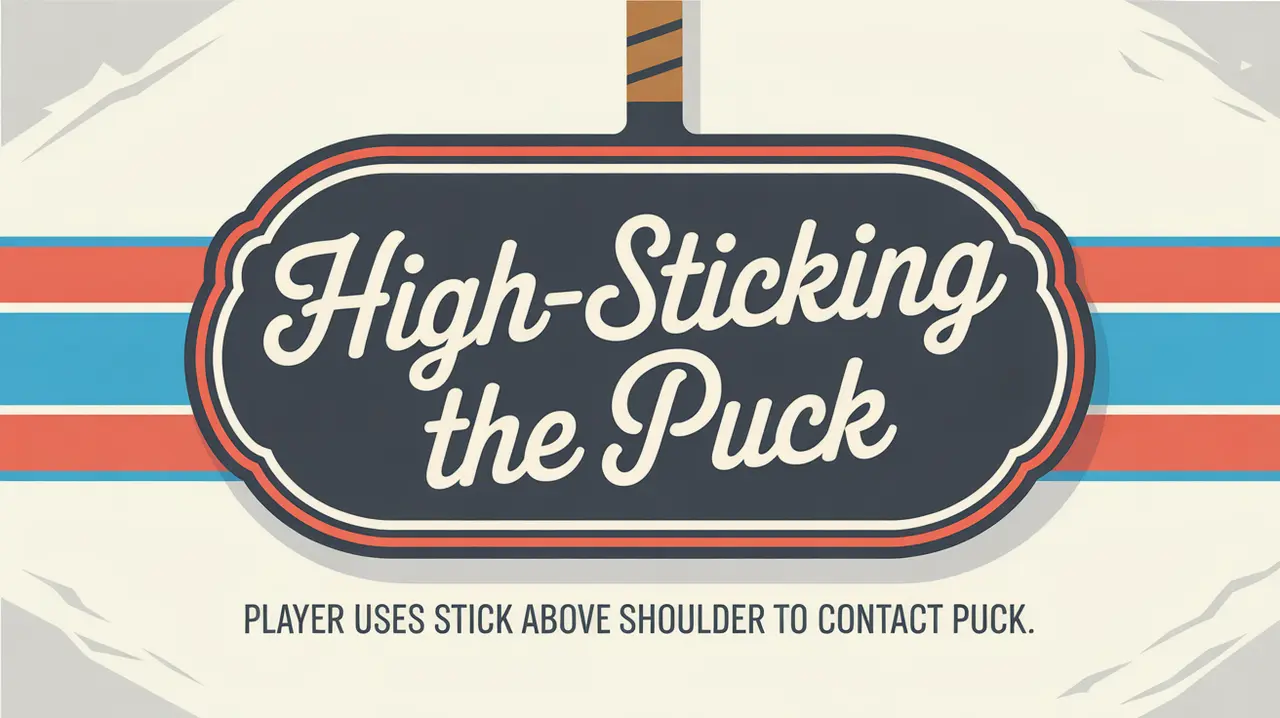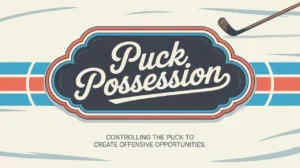Jim’s Intro to High-Sticking the Puck
Hi folks, Jim here, the only commentator who once thought high-sticking was like high-fiving, but with sticks.
What is high-sticking the puck?
High-sticking the puck is when a player makes contact with the puck using their stick above the normal height of the shoulders, or above the crossbar when attempting to score a goal. It’s not a penalty (unlike high-sticking an opponent), but it results in a stoppage of play or a disallowed goal depending on the situation. The rule ensures players don’t gain an unfair advantage or score goals with dangerous stick positions.
How does it work?
High-sticking the puck has two distinct applications:
During Regular Play:
- If a player plays the puck with their stick above shoulder height, and a teammate is the next to touch it, play is stopped and a faceoff takes place in the offending team’s defensive zone.
- If the opposing team is the next to touch the puck, play continues, they get the advantage.
When Scoring a Goal:
- If a player bats the puck into the net with their stick above the crossbar, the goal is disallowed.
- If the stick is below the crossbar, the goal counts.
- Referees or video review are often used to determine stick height on close plays.
The key measurement is shoulder height for playing the puck and crossbar height for goals.
Common Situations Leading to High-Sticking the Puck
- Swatting a Floating Puck: Players try to knock down a puck mid-air but make contact too high.
- Deflections on Shots: Players standing net-front tip pucks with sticks raised above the crossbar.
- Defensive Clears: A defender reaches up to knock down a puck at the blue line and is whistled.
- Desperation Plays: Players in scrambles swing high to keep the puck alive.
How do you make good decisions with it?
Good decisions around high-sticking the puck rely on stick control, awareness, and patience.
- Know Your Stick Height: Keep your stick under your shoulders unless you’re sure the puck is below crossbar level.
- Don’t Swat Blindly: Mid-air pucks are tempting, but an illegal touch can kill offensive momentum.
- Read the Play: Sometimes it’s smarter to let the puck drop rather than risk a whistle.
- Net-Front Awareness: For deflections, practice controlled stick positioning. Even a millimeter above the bar can cost a goal.
How do you master it?
Mastering this rule is about precision and discipline. Skilled players develop a natural feel for stick height and learn how to time their swings so they connect legally. Net-front specialists practice tips and deflections below the crossbar to turn point shots into goals that withstand video review.
What does it look like when done right?
A perfectly timed mid-air swat looks effortless. The stick stays below shoulder level, the puck drops cleanly, and play continues. At the net, a well-placed deflection below the crossbar leaves the goalie helpless and the refs nodding. There’s no whistle, no review, just skill on display.
Commentator’s Corner
Jim’s Take
I’ve seen players turn would-be highlight goals into stoppages because they got greedy with their stick height. A few inches make all the difference.
Parent Tip
Teach young players stick awareness early. Controlling where the stick is in space keeps the game cleaner and avoids unnecessary whistles.
Player Tip
Develop touch around mid-air pucks. Controlled taps beat wild swats, and knowing the legal stick height gives you confidence in tight plays.
A Final Thought
High-sticking the puck isn’t about brute strength, it’s about finesse and awareness. Learn the height limits, trust your timing, and those tricky mid-air moments can turn into smart, legal plays that keep the game flowing.









